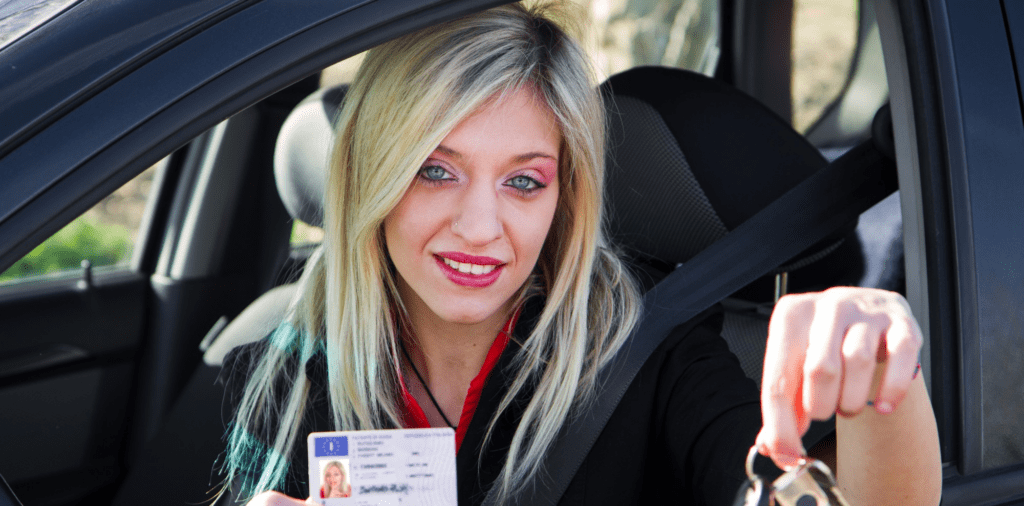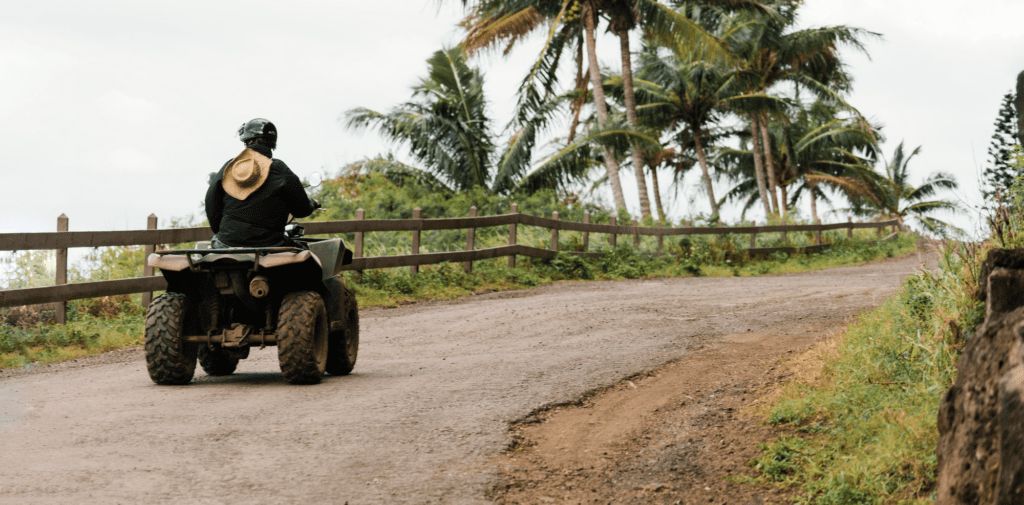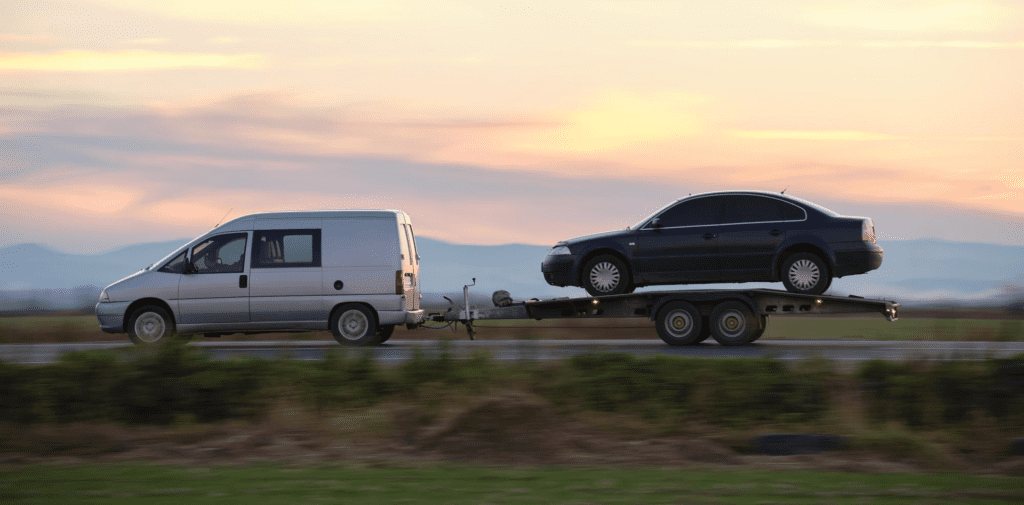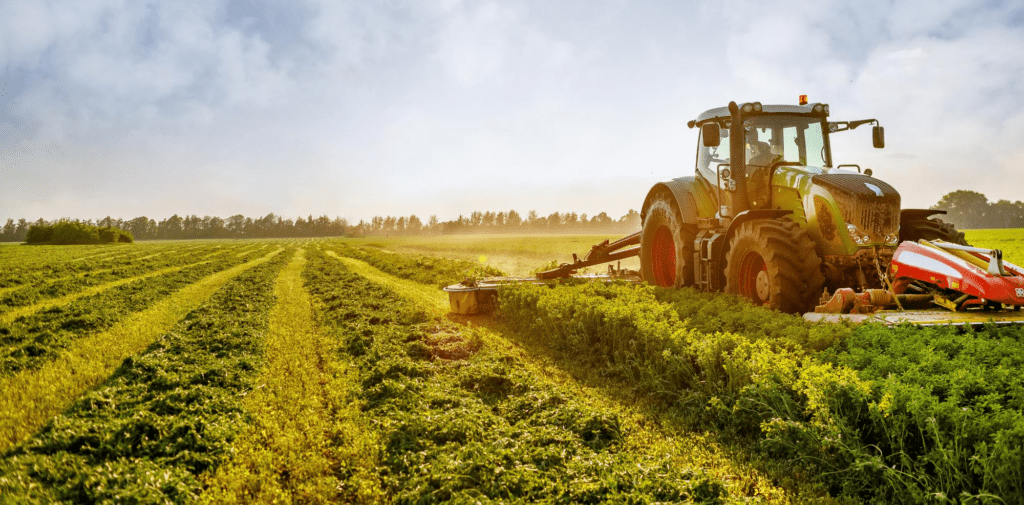
Congratulations on getting your driving licence! You might be curious about which vehicles you can now drive beyond just the regular cars. Don’t worry, it’s easy to find out. Just take a glance at the categories on your licence.
- What are driving licence categories?
- What can I drive with a standard UK licence?
- Additional vehicle categories your licence may permit
- Vehicles requiring additional tests
- What happens if I drive a vehicle that I’m not entitled to drive on my licence?
Let’s dive deeper together! In this guide, we’ll help you navigate the driving licence categories, so you can quickly figure out the range of vehicles you’re allowed to drive. And if you’re keen to expand those horizons, we’ll also show you the steps to add more categories to your licence. Happy driving!
What are driving licence categories?
Whether you are a newly licenced driver or possess extensive driving experience, it is important to be aware of the range of vehicles you are legally permitted to operate. The information regarding this is detailed on your driving licence.
To determine your entitlement, please refer to the reverse side of your driving licence. There, you will find a structured table. In Column 9, the types of vehicles you are potentially eligible to drive are listed.
Adjacent columns indicate the start and expiration dates of your entitlement for each vehicle category. If these columns are devoid of dates for a particular vehicle, it indicates that you are not authorised to drive that type.
Column 12 provides insights into specific regulations or conditions applicable to your driving privileges.
Now, with your driving licence at the ready, let us examine the categories listed to elucidate the vehicles you are qualified to operate.
What can I drive with a standard UK licence?
Possessing a standard UK driving licence provides holders with the entitlement to drive a range of vehicle categories. However, it’s essential to understand that while you can drive certain vehicles as a basic entitlement of your standard licence, some might require you to undergo additional tests or training to ensure proficiency and safety.
Here’s a breakdown of the vehicle categories you’re initially permitted to operate under a standard UK driving licence:
Minimum Age Requirement: 16 years
Holding a Category AM entitlement allows you to operate two- or three-wheeled vehicles. There are certain conditions to note:
- The vehicle’s top speed must fall within the range of 15.5mph to 28mph.
- This category also encompasses light quad bikes that adhere to the same maximum speed limit. These quad bikes should not exceed a weight of 350kg. For electric variants, the weight of the batteries is not included in this limitation.
Before you can drive any vehicle under Category AM, it’s mandatory to successfully complete the Compulsory Basic Training (CBT) test.

Minimum Age Requirement: 17 years
Category B primarily pertains to the entitlement for operating cars. Possession of a driving licence generally signifies this classification. However, the specifics of your entitlements depend on the date of your driving test completion:
Passed before 1 January 1997:
- You have the privilege to operate a vehicle and trailer combination with a maximum authorised mass (MAM) of up to 8,250kg.
- You are also permitted to drive a minibus coupled with a trailer exceeding 750kg.
Passed on or after 1 January 1997:
- Your entitlement extends to vehicles weighing up to 3,500kg MAM, accommodating up to 8 passengers. Additionally, you can tow a trailer not exceeding 750kg.
- You can tow trailers heavier than this, provided the combined MAM of both the vehicle and trailer doesn’t surpass 3,500kg.
- If you are 21 years or older, you can also operate motor tricycles with a power output greater than 15kW.
For physically disabled individuals holding a provisional category B entitlement, it is imperative to also have a provisional entitlement for riding category A1 or A motor tricycles.

Minimum Age Requirement: 17 years
Category F pertains to the operation of agricultural tractors. It may surprise you to learn that once you’ve successfully completed your driving test, you are authorised to operate an agricultural tractor. Indeed, there’s no requirement for supplementary testing!

Minimum Age Requirement: 16 years
Category K pertains to the operation of mowing machines and pedestrian-controlled vehicles.
While many individuals routinely use such equipment, often unaware of the associated licensing category, it’s typically not a primary concern given its limited scope and the nature of its use.
Minimum Age Requirement: 16 years
Category Q grants you the authorisation to operate 2 and 3-wheeled vehicles devoid of pedals, provided the engine size does not exceed 50cc (for vehicles powered by an internal combustion engine). The maximum permissible speed for these vehicles is 15.5mph.
If you have the entitlement for Category AM vehicles (indicating you’ve successfully completed the CBT test), you can seamlessly drive vehicles under Category Q without fulfilling any further prerequisites.
Additional vehicle categories your licence may permit
Should you possess a different type of driving licence or one issued on a specific date, you may discover that you have the entitlement to operate the subsequent vehicle categories:
Minimum Age Requirement: 17 years
Under this category, holders are authorised to operate light motor vehicles and quad bikes. These vehicles should have an unladen weight of up to 400kg. However, when transporting goods, the permissible weight increases to 550kg.
Minimum Age Requirement: 17 years
Holders of this category are permitted to operate vehicles with an attached trailer, though the trailer’s weight allowance hinges on the ‘valid from’ date on the licence.
For licences with a ‘valid from’ date prior to 19 January 2013, there is no specified trailer weight restriction. However, for those dated on or after 19 January 2013, the maximum authorised mass (MAM) for the trailer is capped at 3,500kg.
Minimum Age Requirement: 17 years
This category specifically denotes permission to operate automatic vehicles. If you achieved your driving licence by testing in an automatic car, this will be your designated category.
Should you wish to drive a manual car, a separate manual driving test is required.
Minimum Age Requirement: 16 years
This category permits you to operate 2-wheeled vehicles with a speed range exceeding 28mph, but not surpassing 31mph. Additionally, if the vehicle employs an internal combustion engine, its engine size should not exceed 50cc.
Vehicles requiring additional tests
We now transition to vehicle categories that are not inherently covered by a standard UK driving licence. To get the authorisation to operate these vehicles, additional examinations are necessary.
Minimum Age Requirement: 17 years
This category grants permission to operate light motorcycles characterised by an engine capacity up to 125cc, a maximum power output of 11kW, and a power-to-weight ratio not exceeding 0.1kW/kg. Additionally, motor tricycles with a power output up to 15kW fall under this classification.
To be eligible to drive vehicles within Category A1, it’s essential to first complete a CBT test successfully.
Minimum Age Requirement: 19 years
For individuals interested in operating motorcycles with greater power than the ones covered under Category A1, Category A2 is the relevant classification.
This category permits the operation of motorcycles with a power output up to 35kW and a power-to-weight ratio that doesn’t exceed 0.2kW/kg. The DVSA specifies that such motorcycles shouldn’t originate from a vehicle with more than twice its power.
To obtain this entitlement, there are two avenues:
- Direct Access Route: Involves passing both a theory and a practical examination.
- Progressive Access Route: Requires 2 years of experience on an A1-classified motorcycle, followed by a subsequent practical exam.
Additionally, individuals with a Category A2 entitlement are automatically qualified to operate motorcycles under Category A1.
Minimum Age Requirement: 24 years
Given the elevated minimum age requirement, this category is tailored for motorcycles at the pinnacle of power and engine capacity.
Under this classification, you’re authorized to operate motorcycles exceeding 35kW and possessing a power-to-weight ratio above 0.2kW/kg. Additionally, the entitlement extends to motor tricycles with a power output surpassing 15kW.
Acquiring this entitlement can be achieved through two distinct pathways:
- Direct Access Route: A journey that includes a CBT test, followed by both theory and practical examinations.
- Progressive Access Route: A requisite of holding an A2 licence for a specified minimum duration, culminating in a practical test.
Notably, individuals holding a Category A entitlement are permitted to operate motorcycles under both Categories A1 and A2.
Category C1
Minimum Age Requirement: 18 years
Holding a Category C1 licence authorizes you to operate vehicles with a Maximum Authorised Mass (MAM) ranging between 3,500kg and 7,500kg. Additionally, you are permitted to tow a trailer up to 750kg.
For those who successfully completed their Category B driving test before 1 January 1997, there’s an automatic entitlement to operate C1 vehicles.
Conversely, if you achieved your test post this date, you would typically be required to undergo four Drive Certificate of Professional Competence (CPC) tests, although there might be exceptions in certain situations.
Minimum Age Requirement: 18 years
Under the Category C1E classification, you are authorised to operate Category C1 vehicles while towing a trailer exceeding 750kg. However, it’s essential to note the limitation: the cumulative Maximum Authorised Mass (MAM) of both the vehicle and its attached trailer must not surpass 12,000kg.
To secure this classification, it’s mandatory to enroll in a C1E course and subsequently pass the associated test.
Minimum Age Requirement: 21 years
Holding a Category C classification on your driving licence authorises you to operate vehicles exceeding 3,500kg, and additionally, tow a trailer up to a Maximum Authorised Mass (MAM) of 750kg.
To secure this entitlement on your licence, successfully passing the Category C test is imperative.
Minimum Age Requirement: 21 years
Under the Category CE classification, not only are you authorised to operate Category C vehicles, but you also gain the entitlement to tow trailers exceeding a Maximum Authorised Mass (MAM) of 750kg.
Upon successfully completing the Category C test, you must proceed to take and pass the subsequent CE test to gain this classification.
Minimum Age Requirement: 21 years
Under the Category D1 classification on your driving licence, you are permitted to operate vehicles accommodating up to 16 passenger seats. Furthermore, you have the authority to tow a trailer with a Maximum Authorised Mass (MAM) of up to 750kg. It’s important to note that the minibus’s length should not exceed 8 metres.
Those who successfully completed their car driving test prior to 1 January 1997 may already possess the entitlement to operate D1 vehicles. For those who achieved their test results post this date, successfully undertaking and passing the Category D1 test is essential.
Minimum Age Requirement: 21 years
Under the Category D1E classification, you are authorised to operate a Category D1 vehicle while towing a trailer that has a Maximum Authorised Mass (MAM) exceeding 750kg. It’s imperative to remember that the aggregate MAM of both the vehicle and the attached trailer must not surpass 12,000kg.
After successfully completing the Category D test, the subsequent step is to undertake and pass the D1E examination.
Minimum Age Requirement: 24 years
Holding a Category D designation on your driving licence permits you to operate buses equipped with over 8 passenger seats. Additionally, you can tow a trailer with a Maximum Authorised Mass (MAM) of up to 750kg.
To get this entitlement, one must successfully complete the Category D examination.
Minimum Age Requirement: 24 years
The Category DE designation on your driving licence allows you to operate a Category D vehicle, while also towing a trailer exceeding 750kg MAM.
To get this entitlement, one must successfully complete the Category DE examination.
-
Category G: Road Rollers
- These vehicles are designed for flattening or levelling surfaces. They can be powered either by steam or diesel. They’re commonly used in construction sites, especially for road building.
-
Category H: Tracked Vehicles
- This category covers vehicles that run on tracks instead of wheels. This includes both civilian tracked vehicles and decommissioned military vehicles that have been repurposed for civilian use.
-
Category K: Mowing Machines and Pedestrian-Controlled Vehicles
- Vehicles in this category are typically lawn-mowing machines. The term “pedestrian-controlled” refers to vehicles that are operated by an individual who walks behind or alongside them, rather than riding on them.
-
Category L: Electrically-Propelled Vehicles
- These are vehicles powered solely by electricity. They are becoming increasingly popular due to their environmental benefits and can range from small scooters to full-sized cars.
-
Category M: Trolley Vehicles
- This refers to vehicles that are designed to operate on overhead electric lines, commonly found in urban settings like trams or trolleybuses.
-
Category N: Exempt from Duty Vehicles
- Vehicles in this category are exempt from specific obligations or duties. This could be due to various reasons like historical significance, special usage, or other specific classifications.
In the UK, electric bikes (often referred to as e-bikes or pedelecs), mobility scooters, and powered wheelchairs are classified in a manner that typically exempts them from the requirement of a driving licence. Here’s a breakdown with additional information:
-
Electric Bikes (E-bikes or Pedelecs):
- As long as the e-bike meets certain specifications, such as having a maximum power output of 250 watts and not being able to assist the rider beyond 15.5 mph, you do not need a driving licence to ride one. Additionally, the rider should be at least 14 years old.
-
Mobility Scooters:
- These are designed for people with mobility issues. There are two categories: ‘Class 2 invalid carriages’ which can’t be used on the road (except when there’s no pavement) and have a maximum speed of 4mph, and ‘Class 3 invalid carriages’ which can be used on the road and have a maximum speed of 4mph off the road, and 8mph on the road.
-
Powered Wheelchairs:
- Similar to mobility scooters, powered wheelchairs are primarily designed to assist those with limited mobility. They don’t require a licence, but it’s essential that users adhere to pavement and pedestrian area guidelines when operating them.
However, while you may not need a driving licence, it’s crucial to be aware of and adhere to any specific rules or regulations related to the safe operation of these vehicles on public roads and pathways.
Always ensure the vehicle is in good working condition and familiarise yourself with the local laws concerning its usage.
What happens if I drive a vehicle that I’m not entitled to drive on my licence?
It may seem tempting to assume that no one will notice if you drive a vehicle you aren’t licensed for, but this assumption can be misguided. The categorisation on driving licences isn’t merely a formality—it clearly delineates which vehicles you’re legally permitted to operate.
Should the Police stop you and request your licence, it’s a straightforward check for them to determine if you’re in a vehicle beyond your licence’s purview.
Being caught driving a vehicle without the proper entitlement can result in serious consequences. This includes a potential fine of up to £1,000, the addition of up to 6 penalty points to your licence, and even a possible driving ban. Is this risk truly worth taking? Unequivocally, the answer is no.
If you’re interested in operating a vehicle outside the scope of a regular car, it’s crucial to verify your licence permissions. If your licence doesn’t grant you the entitlement, consider the necessary steps and tests to acquire the needed classification.


